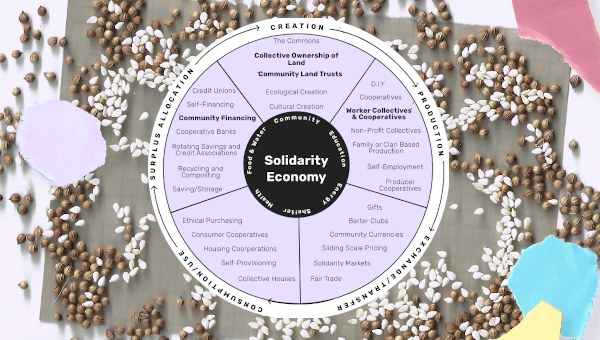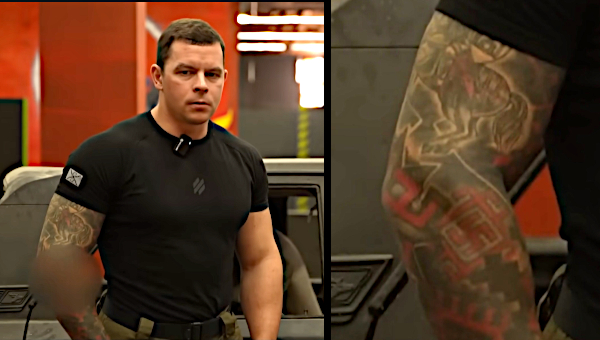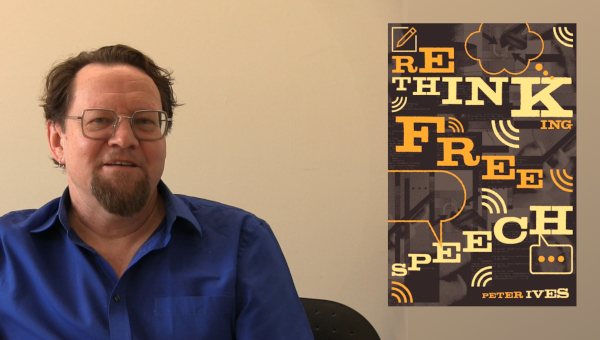Social Justice Must Include Arts Funding
The United States is one of the wealthiest countries in the world, with an enormous wealth gap. There is currently no place in America where “a full-time, minimum-wage worker” can afford to pay rent. The inequities are seemingly boundless in America, and there are countless social and racial justice ramifications of having a profit-centered economy – from increasing homelessness, to hunger, to climate crises (all of which have been worsened to some degree by the global pandemic). Instead of the government agencies or large organizations coming up with viable solutions to these problems, it is often the people experiencing the worst of these inequities who come up with the most innovative, effective strategies to cope and to address the many deficiencies embedded in the system. The people already living on the margins – where the systemic problems are already amplified – are the ones who are offering means to relocalize supply chains, strengthen mutual aid efforts, create community-led and owned housing and build what is often called the solidarity economy.
It is very often artists, BIPOC (Black, Indigenous, and people of color), trans people, queer people, strippers and single moms who are the force behind bringing about a shift in culture – and in the economy – from within. They are the ones offering local solutions to the global-scale problems that many people face today and that many more will face in the future. This is detailed in the new report, “Solidarity Not Charity: Arts and Culture Grantmaking in the Solidarity Economy.” In particular, the report explores how the grantmaking community can support culture-workers and artists to create a more just economy. The report was commissioned and released by New York-based Grantmakers in the Arts (GIA), which is a national association of art funders, and the report received additional funding from the William and Flora Hewlett Foundation, the Kenneth Rainin Foundation and the Barr Foundation.

Solidarity Economy
In addition to a written version of the report, there is also an interactive website and informative short film that provides an overview of what is known as the “solidarity economy,” and the vital role of culture-workers in building this economy. The website also includes recommendations and an “action checklist” for grantmakers to use as guidance to support the solidarity economy.
As the authors of “Solidarity Not Charity” explain in their report, “solidarity economy” is a relatively contemporary term used to describe “sustainable and equitable community-control of work, food, housing, and culture.” It is “recognized internationally as a way to value people and the planet over profits and to unite grassroots practices like lending circles, credit unions, worker cooperatives, and community land trusts to form a base of political power,” and ultimately aims to transform the economy at the local level in order to transform the world economy and systems of value.
The COVID-19 pandemic has exposed and exacerbated many of the problems already in existence, and the arts and culture sectors have been no exception. The Solidarity Not Charity report by GIA was commissioned in response to the pandemic, as well as the Black Lives Matter uprisings. As the website landing page of the report states:
“No one knows what arts and culture will look like after the pandemic… 63 percent of creatives have become fully unemployed [through the pandemic and] one-third of museums say they are likely to close forever.
“The COVID-19 death rate of Black and Indigenous people is more than twice the COVID-19 death rate of White people in the US. And yet, foundation giving in 2020 documented that only 5 percent of pandemic-response dollars were intended for communities of color. Around half of 1 percent of annual foundation giving directly supports women and girls of color. And less than half of 1 percent goes to Native Americans.
“What would the cultural economy be like if it loved Black and Indigenous people?”
Eddie Torres, president and CEO of GIA, said the association decided in 2020 to fund the Solidarity Not Charity report for two reasons. The first was to support their vision for a future grantmaking field that invests more broadly in culture and supports more widespread communities, businesses, artists and organizations. Second, GIA commissioned the report to provide a shared contextual knowledge when it comes to the solidarity economy, which works as a reference point for their own programming to stem from.
“The pandemic revealed how interdependent we are – artists and workers, nonprofits and small businesses,” Torres said. “As a field interested in realizing a just future, we are recognizing that we are as safe as the most vulnerable among us. Our field’s responses to this crisis remind us that all funders can put the most vulnerable at the center of their work and treat them as the leaders they are. This centering of oppressed groups – including people of color, people with disabilities and others – need not be charity. Funders can and should support self-determination by communities, including investing in organizations that are founded by, governed and managed by and for impacted communities.”
Torres continued to say that federal legislative responses to the COVID-19 crisis were a reminder that the nonprofit community can access the public services and benefits available to the small business community and that “the small business community employs many artists and culture-workers. There are no sectors in society in which artists do not work. Support for artists and the arts must be a part of all social support [systems],” said Torres.
System-Change Work
Nati Linares, communications manager at the nonprofit New Economy Coalition (NEC), and Caroline Woolard, an artist, educator and fellow at the Center for Cultural Innovation, authored the report in just four months from November 2020 to March 2021. To formulate the report, Linares and Woolard gathered insights from “grantmakers, artists, advocates, scholars, lawyers, and economists in order to inform the recommendations for arts and culture grantmakers on how they can engage in systems-change work that addresses root causes rather than symptoms of cultural inequity,” according to a GIA press release.
In an email interview with the Independent Media Institute (IMI), the report’s authors said that the idea for them to collaborate on a Solidarity Not Charity report came when Laura Zabel, executive director of Springboard for the Arts, forwarded GIA’s request for proposals about racial justice and “alternative economies” to Linares. Linares and Woolard decided to apply together as a chance to collaborate for the first time and “shift the discourse in the arts and culture sector from ‘alternative’ economies – which assumes that the ‘economy’ is always-already neoliberal and capitalist – to solidarity economies,” Woolard told IMI.
“We wanted to highlight the connections between mutual aid networks, open source software, and cooperatives that creative people are organizing now,” Woolard said. “In short, to show grantmakers the role culture plays in initiatives that build ‘community ownership and democratic governance for political, cultural, and economic power,’ as [CEO of the Kataly Foundation] Nwamaka Agbo articulates so well.”
Linares, who joined NEC in 2016, following a decade of work with record labels and the live music industry, told IMI that her experiences in the “belly of the music industry beast” are what fuel her.
“I want to be a part of building a better world for the next generation of creators, especially those most historically excluded,” she said. “I believe when artists and creators are in control of the resources they need to create, we can do the hard work of building a truly revolutionary culture. Coming across Caroline [Woolard]’s work – as I was getting immersed in the histories and legacies of solidarity economy organizing in the US while working at NEC – confirmed my suspicions that artists had always been practicing the values of solidarity economy. … [W]hat’s most exciting to me right now is that it seems more and more organizers in the realms of economic justice/post-capitalist organizing and visionary artists are finding each other.”
Woolard said that when she was growing up as a queer kid in Rhode Island, her father – who grew up without running water and was the first generation to go to college in their family – warned her against going down the path of “starving artist.”
“He talked openly with me about his desire to prepare me to become a doctor or a lawyer, something ‘impressive,’” Woolard said. “I pushed back. I said, ‘I will make a living as an artist. Artists are not stupid. I will take care of you, when you are old.’ This began my commitment to economic justice and the arts – for me, they go hand in hand. As a teenager, I got into Cooper Union in New York, which was tuition-free for all students for 154 years. From there I believed and dreamed and fumbled my way into a community of artists in New York City that held me. I connected with collectives, barter networks, mutual aid groups, housing cooperatives, and eventually, worker-owned businesses and land trusts and the broader solidarity economy movement. What excites me is all the BIPOC, queer, and working-class people who are building networks and institutions and study groups, now.”
Economic Realities for Artists
A short film featured on the report website, which has graphics by animator Sean Dong, details the economic realities that culture-workers face today and lays out the premise for expanding a solidarity economy. Among many striking statistics, at one point the video states that “An artist living in a community land trust living in New York City will have 27 hours a week to make art compared to an artist in market-priced housing who will have four hours a week for art-making.”
Woolard said she crunched those numbers with artist Amy Whitaker based on the median income of an artist and the cost of housing in NYC in a land trust versus market-rate housing in the same area.
“As you see in the report, we write that ‘a typical dancer/choreographer, who makes $31,200, the annual average earnings for their field before COVID-19 hit, will only have to spend 6 hours a week to cover their housing costs in a community land trust, compared to the 28 hours a week it would take to cover a market-rate rental in the same area’,” Woolard told IMI, noting their findings that artists living in community land trust have 27 hours a week for art versus artists in market-priced housing who have just four.
The authors said that if someone were to walk away from the report with just one key understanding, they would want people to see that all of the various initiatives covered – mutual aid networks, housing and worker co-ops, participatory budgeting processes, public banks and time banks – support one another to form a base of political power. This is because they have “community ownership and democratic governance for political, cultural, and economic power” in common. According to the authors, while most people are aware of the “discrete practices and models that comprise the solidarity economy,” many people, however, do not realize what the relevant term is that holds these concepts together, or that these practices are supported holistically in other countries around the world. They recommend looking at Nwamaka Agbo’s Restorative Economics Theory of Liberation, which is used (with permission) in their report.
The report states that “The economic system culture-bearers and artists want is not only possible – it already exists,” and it provides a plethora of on-the-ground examples of this happening. Linares said some of the most striking examples of this happening come in places that “balance the resistance work with the building work.” She provided examples of artist-led resistance organizing efforts happening right now, which readers can lend their support to, including the following:
- The Union of Musicians and Allied Workers struggle against Spotify
- MoMa Divest
- The People’s Forum in NYC
- The Music Workers Alliance, formed to provide resources for out-of-work contractors within all facets of the industry
- The UK’s #BrokenRecord campaign, which is lobbying Parliament to legislatively restructure the industry
- The National Independent Venue Association, organized by performance hall owners across the US to demand a share of the government’s stimulus (which they secured)
- Catalytic Sound, a small streaming service run by a cooperative of 30 avant-garde musicians with the goal of paying its artists fairly
- The Pact, a group of hit songwriters who’ve publicly declared they will not grant songwriting credit to performers, or anyone else, who did not actually have a substantial writing role in a song’s conception
Linares also pointed out how readers can support artist-led “building” efforts and platforms like:
- Resonate co-op
- Ampled
- Guilded (USFWC’s freelancer cooperative)
- Happy Family Night Market
- Sol Collective
- Check the directory under “Examples” at art.coop/report
She also recommended that readers of the report locate their local grassroots organizing and solidarity economy-cooperative groups and get involved.
Linares told IMI that in working on the report, the authors “realized that many artists and culture-bearers want to get to know each other better and want to learn more about the solidarity economy as it relates to culture. A key recommendation we heard again and again from our interviewees in the report was about the importance of studying-into-action together.”
Building on the momentum of the report, the authors have put together an effort they call Art.Coop: Study-Into-Action, for which they are inviting cultural innovators to join a peer-learning program to “connect people across silos,” Linares said. This includes “popular arts educators, cultural organizers, arts academics, economists and grantmakers who are building the solidarity economy now.”
Woolard said they came up with the idea, “because so many artists and culture-bearers are building the networks and institutions they desire right now. The cohort for the pilot program exists so that people can learn and build power together. In the winter and spring, Nati and I will work together with folks who are most interested to build a curriculum related to culture and solidarity economy for more cohorts.”
Linares also specified that the cohort participants include interviewees from the Solidarity Not Charity report. This includes organizers from the Boston Ujima Project, the Sustainable Economies Law Center in the San Francisco Bay Area, Justice Funders, Anticapitalism for Artists, and the Center for Popular Economics.
“In addition to these participants, we have invited the following arts/culture residencies, organizations, and schools to nominate three staff, faculty, or residents each to join the cohort: Recess Art (New York City), Minneapolis College of Art and Design, the Joan Mitchell Foundation (New York City and New Orleans), Arizona State University (Tempe), The Field (New York City), Drexel University (Philadelphia), and the Guild of Future Architects. Haystack Mountain School of Crafts (Maine) is the instigating institution for this pilot program, and Open Collective Foundation is the home of the program,” Linares further added in an email to IMI.
The public portion of the Art.Coop: Study-Into-Action project will be open to anyone who wants to learn, on Fridays beginning September 3 (12 p.m. EST). •
This article was produced by Local Peace Economy, a project of the Independent Media Institute.





